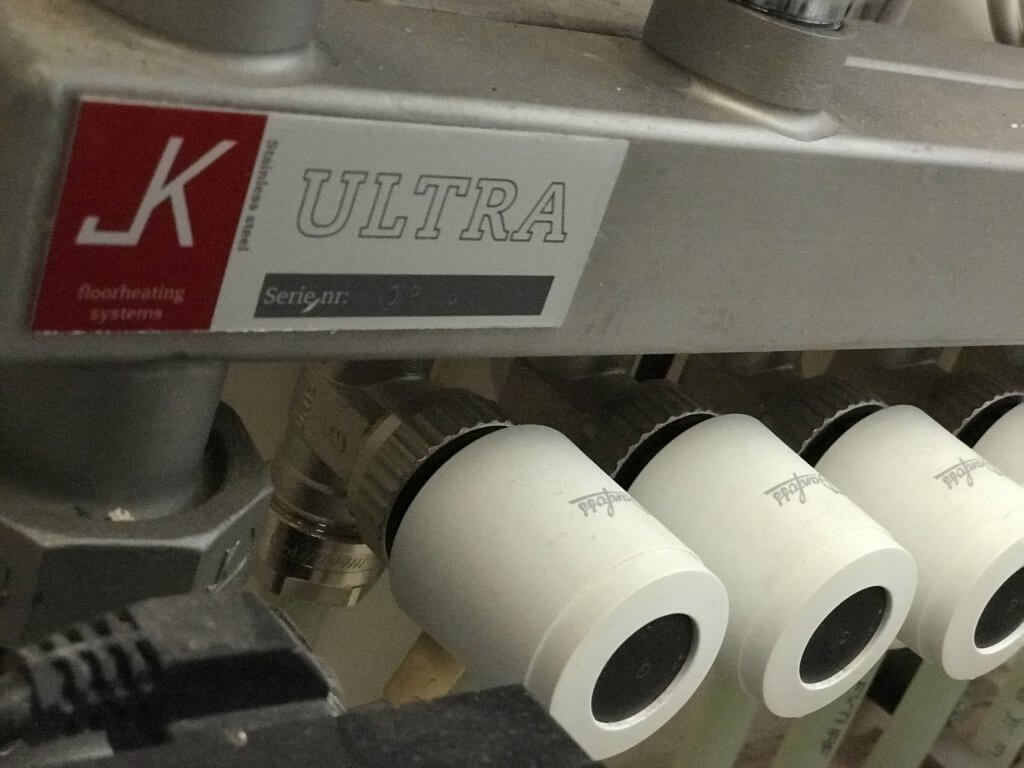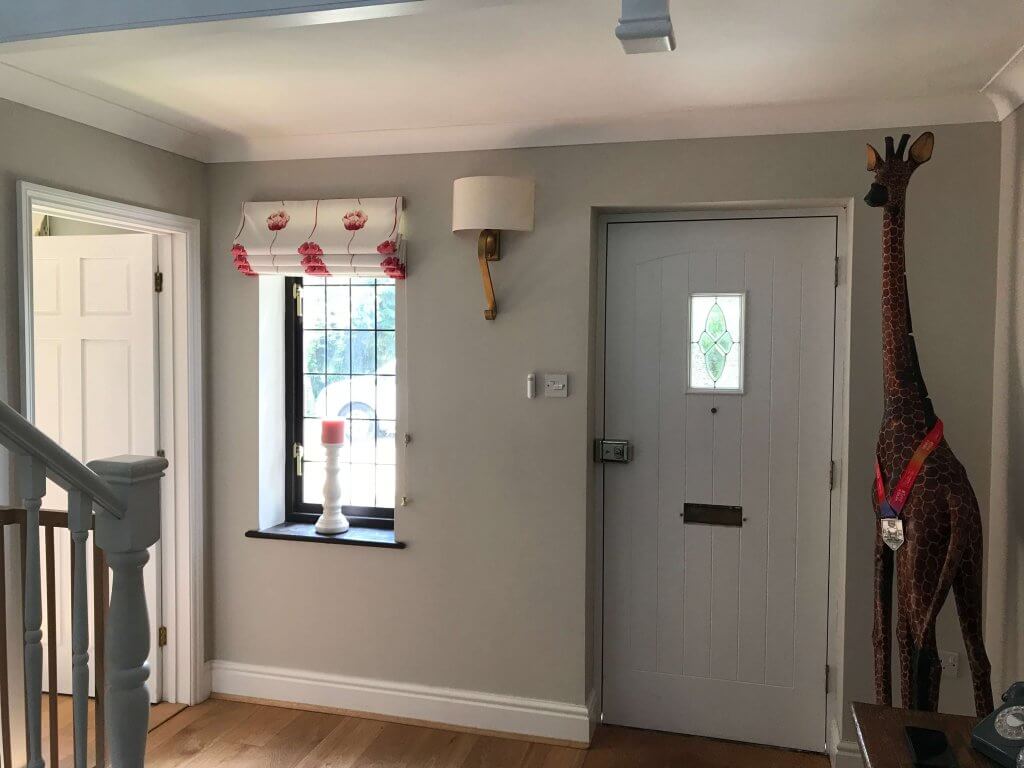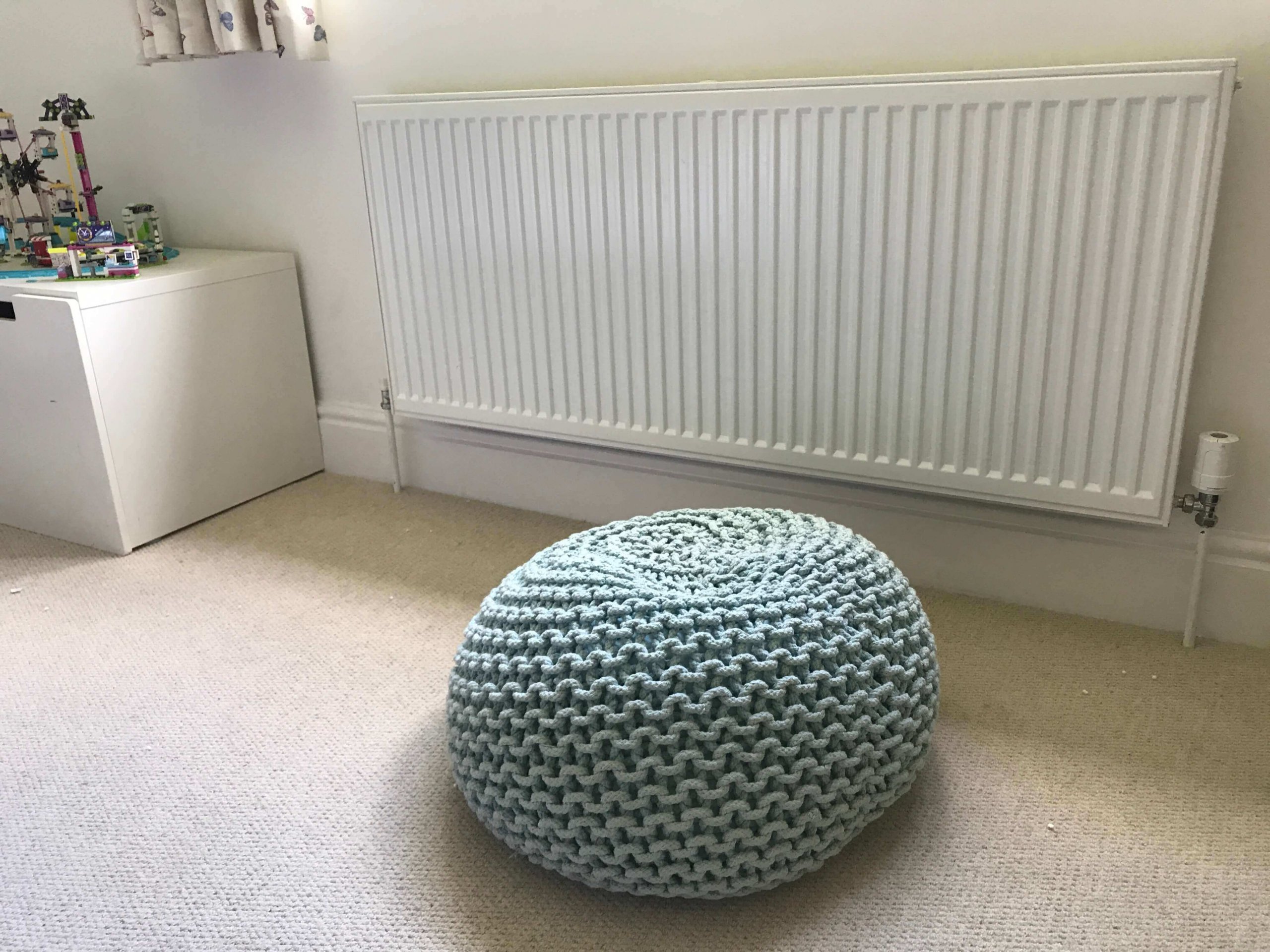
Jamie Loden spent 14 years in the Army and now works for Barclays Bank, currently in their operations and technology division, having previously spent 7 years heading up operations in Africa, where he was involved with their digital app products. Jamie enjoys running and recently completed the London Marathon in under 4 hours. When Jamie, his wife Sarah, 3 children and 4 dogs, returned to the UK they looked for a property, a family home that would suit their lifestyleie
They found and purchased a property that had only one previous owner. It was built in 1989 and had had no alterations made since. Downstairs was the original open fireplace providing the only heat, while upstairs had electric night storage heaters.
This was not sufficient or efficient and was expensive to run, so everything was removed as part of an extensive renovation. This included under-floor heating (UFH) to the lower level, new radiators upstairs, new hot water system, triple glazing and heating controls to control the UFH and upstairs heating.
Why Underfloor Heating?
Jamie did not want radiators occupying the wall space – especially as there were none to start with and he knew UFH was an option. He started looking into it to understand how it works.
He had watched Grand Designs, but they could not dig up all of the floors as required. Also, there were lots of horror stories about digging up floors. They could have chosen another system that uses microbore pipe in concrete, but having to raise the floor level was also not possible in their case and would have resulted in slow warm-up times and lack of responsiveness.
Further research on renovation and trade websites led to them finding JK Floor Heating (JK). Their website had many pictures of the same type of house as his, so Jamie could see they had experience with his problem. JK had a strong presence in Europe, but were relatively new in the UK, however, they offered a new revolutionary UFH system that did not need floors to be dug up or raised. The pipes would be cut into the existing floor, then covered with the new floor covering.
Jamie sent off a set of floor plans and they returned a quote and offered to conduct a site visit to do a cut test – all free of charge. While at the house, JK staff listened to what the family wanted from the system and explained what would happen and how it would work. However, the flooring company expressed concern about putting flooring directly against the pipes of the UFH, with only glue between the pipes and the wood. A letter from JK confirming that it was a low-temperature system overcame these concerns.
UFH was slightly more expensive, but taking into account the cost of putting in radiators downstairs instead, the additional benefits of UFH outweighed the minimal increase in cost. The enthusiasm and detailed information provided during the site visit helped Jamie take the decision to go ahead with the installation. He was confident that they knew what they were doing.
Which heating controls?
Adding a state-of-the-art system was a necessity to achieve energy efficiencies, improve the running costs and to ensure that the family had control over the UFH system and the upstairs radiators. JK had a recognised partner for controls, so this was an obvious starting point. Genius Hub offers automatic room-by-room heating control at an affordable price, controllable through a simple app.
Jamie looked at comparative reviews, which were good and other reviews were excellent, so he had no concerns about the system that Genius Hub could provide. He had looked into alternative control systems, but having the UFH pipes much closer to the surface meant that the heating is much more responsive and therefore perfect for the Genius Hub occupancy detection control.
Genius Hub offered complete control of the whole house at room level, which was important for the family. The property is detached and a number of rooms have two external walls, so are quite different in the way they behave. Two bedrooms and the dining room face North. These require a higher level of heat.
The family dogs use a utility room to dry out after wet or winter walks, so they need the room control to raise the temperature in response to the extra demand. Jamie told us, “The overall trend in home automation is moving away from one central room thermostat, so zoning was the only way to go”.

What about the installer process?
The full scope of the renovation project took 11 weeks. The installation of the UFH system fitted in well and the installation team were at the property twice. They worked efficiently and professionally and the process was extremely unobtrusive. The manifold under the stairs had no impact on space or aesthetics and the second one, in the utility room, is housed alongside a standard boiler. Jamie told us that this has been a “retrofit with no compromises on the floor height and the issues around the doors”. The system was installed and ready to use straight away.
Jamie used his own boiler engineers to install the Genius Hub system. They looked at the parts and decided they would do it. They did find it to be harder than anticipated, having not installed a Genius Hub system before, but the installation manual was clear and there are plenty of online help videos. Jamie told us that on the one occasion they used the phone tech support, the service provided was “second to none”. The successful installation led to Jamie’s boiler engineers being taken on-board as part of Genius Hub Pro-Installers team.
Conclusion?
Responsiveness of the UFH was an important factor. Being able to raise and lower the temperature in specific rooms was key. In winter, there was a requirement to raise the temperature in the study at certain times. Jamie told us that the room that the dogs use is “phenomenally responsive”. People had told him that he would wait two hours to feel the difference when demanding more heat, but in reality it is more like 10-15 minutes with the tiled floors.
Installation of the Genius Hub is quick, easy and causes no disruption because it creates its own wireless network. Fixed wireless repeaters ensure the connection is rock-solid. He states, “You cannot go back once you have zonal control”, adding “Think of life before mobile phones, where there were only landlines – that is the difference. Initially people said that mobile phones would never catch on!”
Jamie and his family are happy with the outcomes of installing both the UFH and Genius Hub and have been making recommendations to friends.


